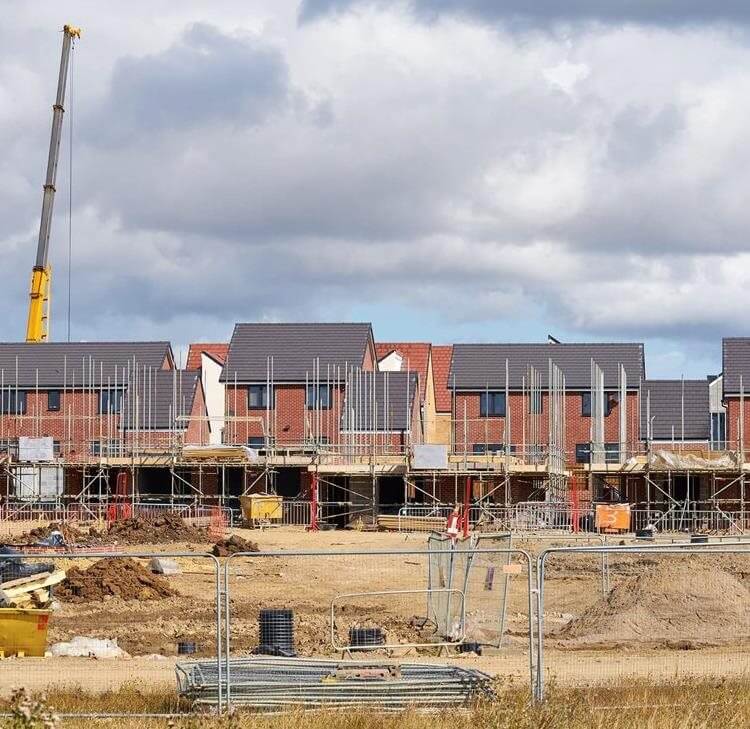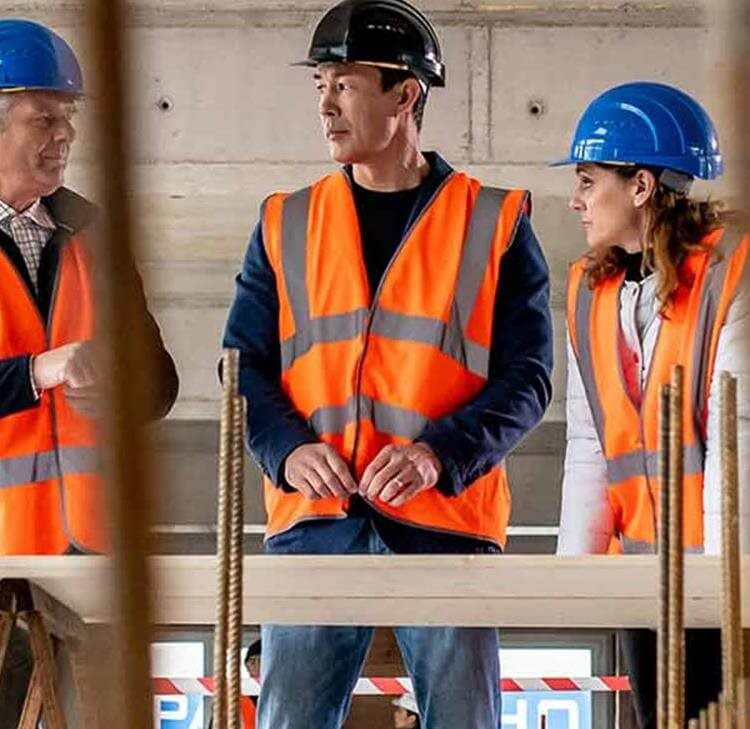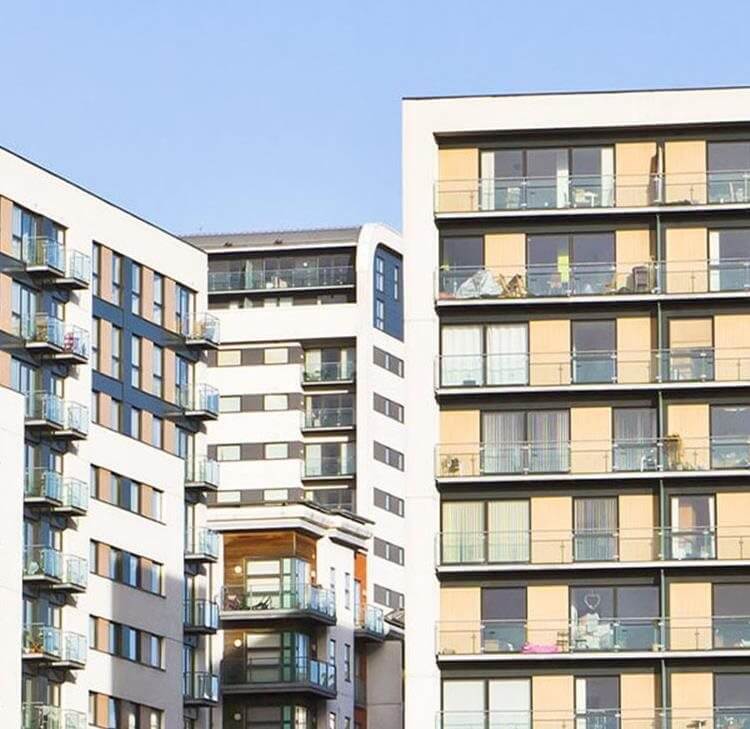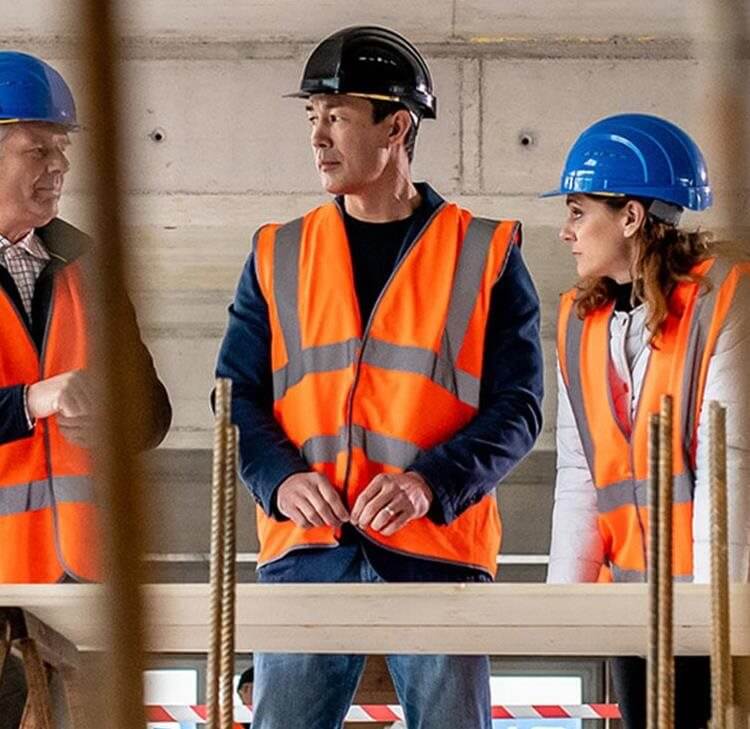On 17 August 2023, the Government published five new regulations to bring the new building control regime for all buildings in England into force from 1 October 2023. The date for implementation of the corresponding secondary legislation in Wales is unknown.
In this series of articles, we have considered the changes which have been introduced by the Building (Approved Inspectors etc. and Review of Decisions) (England) Regulations 2023 in relation to the carrying out of the building control function for all buildings, and the Building Regulations etc. (Amendment) (England) Regulations 2023 in relation to.
In this final article, we consider the new building control regime for higher-risk buildings which has been introduced by the Building (Higher-Risk Buildings Procedures) Regulations 2023 (the HRB Regulations).
The new building control regime will impact the day-to-day progression of HRB Works and works to higher-risk buildings throughout the lifecycle of any given project. The regime introduces detailed and extensive requirements in relation to the maintenance of contemporaneous records regarding the design and carrying out of the works, and the giving of notifications, and the provision of information, to the Regulator. The greater proportion of these requirements are the responsibility of the client (as opposed to the contractor or designer), and include signing a statement to confirm that the works, and the design of the works, complies with the Building Regulations. Non-compliance risks refusal by the Regulator to grant a completion certificate for the works, which is likely to be required to achieve practical completion, and insure, occupy or sell the property.
Given these new provisions, clients are likely to need more support than ever to help manage the new obligations placed on them. This might include seeking to impose appropriate contractual obligations on, and safeguards from, contractors and designers to mitigate the risks arising under the new regime. They might also consider seeking support from specialists with a technical understanding of the Building Regulations to inform the preparation of applications for building control approval, change control, and completion certificates with the objective of maximising the prospect of an application being successful, and minimising the risk of delay during the lifecycle of the project or barriers to the insuring, occupation or sale of the property. However, clients need to be aware that whilst they can delegate their duties contractually, that does not relieve them of their statutory responsibilities under the new regime (i.e., the client will be directly responsible to the Regulator (as defined below) if those delegated duties are breached).
In any event, these changes are likely to have significant practical consequences. In particular, there is some understandable reluctance from those with the expertise to competently take on work for higher risk buildings to be the first to navigate the new regime, particularly given the potential delays that might arise on any project, with some expressing a preference to learn from the experience of others instead. Secondly, any party who does take such work on will be charging a, perhaps significant additional cost to do so, which may be problematic in a market which has already been subject to recent significant price inflation.
Higher-risk buildings
We considered the definition of “higher-risk building” in our first series of articles in relation to the Building Safety Act 2022 (the Act). For the purposes of the regulations which apply during the design and construction phase, a higher-risk building is defined as a building in England which:
- Is at least 18 metres in height or has at least 7 storeys.
- Either contains at least two residential units or is a care home or hospital.
The definition of higher-risk building excludes secure residential institutions, temporary leisure establishments, and military premises.
HRB work and work to existing HRBs
The new building control regime for higher-risk buildings introduced by the HRB Regulations distinguishes between “HRB Work” and work to an existing higher-risk building.
HRB Work means:
- The construction of a new higher-risk building.
- Work to an existing building that causes the building to become a higher-risk building (and any work carried out at the same time).
- Any work that may be necessary to ensure a building which as a result of a change of use becomes a higher-risk building (such as the conversion of a commercial property to a residential property) complies with the applicable requirements of the Building Regulations 2010 (the Building Regulations) (and any work carried out at the same time).
Any work to a higher-risk building which is not HRB Work is defined as work to an existing higher-risk building.
Building control approval
HRB work
A client must apply for, and be granted, building control approval before starting HRB Work, or any stage of HRB Work. The application must contain specified information, and be accompanied by:
- A plan to a scale of not less than 1:1250 showing the details specified by the HRB Regulations.
- Such other plans as necessary to show that the HRB Work will comply with all applicable requirements of the Building Regulations.
- A competency declaration (and for further information on the competency requirements to which the declaration relates, see our second article in this series).
- A construction control plan, change control plan, and mandatory occurrence reporting plan.
- A compliance statement.
- A fire and emergency file.
- A partial completion strategy if occupation of a part is proposed before completion of the HRB Work.
If the application relates to a stage of HRB Work, the client must also:
- Provide a statement setting out a detailed description of the stage to which the application relates and the other stages of the project, including an estimate of the time when each stage will start.
- As part of the compliance statement, set out the design principles and building standards to be applied to the work in the stage to which the application relates, and a summary of those which will apply to subsequent stages.
Schedule 1 to the HRB Regulations specifies in detail the information that must be included in a competence declaration, construction control plan, change control plan, compliance statement, fire and emergency file and partial completion strategy.
A client cannot contract out of the obligations imposed under the HRB Regulations, and the detailed requirements which are prescribed in relation to the content and form of the documentation and information referred to above means there may be an increased need for clients to employ specialists to assist with the application process for building control approval, perhaps as part of an enhanced project management role. As explained further below, the submission of incomplete or incorrect documentation or information risks the application being rejected, and the issue by the Building Safety Regulator (the Regulator) of stop notice intended to prevent the commencement or carrying on of the corresponding works. The cost to the client of any consequent delay to the project may be significant, and we anticipate that many clients will seek to recover such costs from any person who has informed or produced the documentation or information in issue.
Work to existing higher-risk buildings
The issues referred to above also apply when a client is seeking to carry out work to an existing higher- risk building, unless the work is excluded from the requirement to obtain building control approval because it consists of only:
- “Scheme work”, which means work which can be carried out under a self-certification or third party certification scheme in accordance with reg. 20 and 20A, Building Regulations.
- “Exempt work”, which broadly covers discrete electrical or plumbing work of the type typically carried out for domestic clients.
- “Emergency repairs”, which means repairs necessary to be carried out as a matter of urgency due to a risk to the health, safety or welfare or persons in or about the building, and it is not practicable to apply for building control approval.
All other work to an existing higher-risk building requires building control approval, and the application requirements differ depending on whether the work is “Category A” or “Category B” work. Category A work includes:
- Work which increases or decreases the external height or width of a higher-risk building.
- Work which changes the number of storeys a higher-risk building has.
- Work which changes the number of flats or residential rooms contained in a higher-risk building.
- Work which changes the number of, or width of, the staircases or any other escape route within a higher-risk building.
- Work to the external wall of a higher-risk building (excluding materials or work which are excluded from the requirement to be classified in accordance with BS EN 13501-1:2018, as described in reg. 7(3), Building Regulations).
- Work which changes the internal layout of a higher-risk building.
- Work which affects the active or passive fire safety measures in a higher-risk building.
- Any other work which affects the common parts of a higher-risk building (including the external wall).
Category B work is work to an existing higher-risk building which is not Category A work, scheme work, exempt work, or emergency repairs.
The detailed requirements which are prescribed in relation to the content and form of the documentation and information to be included with an application for building control approval differ between HRB Works, Category A works to existing higher-risk buildings, and Category B works to existing higher-risk buildings create clear scope for confusion, or even simple mistakes, which risk delaying the commencement of works and the consequential cost that may cause to the client and contractor. Clearly, those involved in informing and producing document and information in support of an application will need to take the utmost care to ensure the content is accurate and complete. As a result, there is awareness in the industry of the risks involved in this regard, and an understandable wariness of being the first party to engage on a project caught by the new regulations, with many parties expressing a preference to learn from the experience of others first.
Determination of applications for building control approval
The Regulator is required to determine an application for building control approval within 8 weeks (in the case of work to existing HRBs) or 12 weeks (in the case of HRB Work), beginning with the date on which the application is received, or within such longer period as the applicant and the Regulator may agree in writing. The Regulator may reject an application or impose conditions on the grant of approval if the application or any accompanying document:
- Does not comply with the requirements referred to above;
- Is not sufficiently detailed to allow the Regulator to determine whether the relevant work would contravene any applicable requirement of the Building Regulations.
- Shows the relevant work would contravene an applicable requirement of the Building Regulations.
- Shows the proposed strategies, policies or procedures for the relevant work would contravene, or would be likely to contravene, the requirements of the HRB Regulations in relation to changes to documents or persons, the golden thread, mandatory occurrence reporting or the dutyholder and competency regime (and for further information on the dutyholder and competency regime, see our second article in this series).
The requirement to demonstrate the work will comply with all applicable requirements of the Building Regulations appears likely to mean the design and specification of the works will need to be complete, and the client is, effectively, in a position to commence work before the application is submitted to the Regulator.
There will, however, be a minimum of an 8- to 12-week period during which the decision of the Regulator is pending and no work can be commenced or carried out. A client or contractor who commences or carries on work without building control approval being granted risks the Regulator laying open the work for inspection, and the commencement of enforcement. Importantly, and as we explained in our first series of articles in relation to the Act, there are circumstances in which directors, managers and other individuals can be prosecuted for an offence committed by a corporate entity with the consent or connivance of the individual.
Notices before starting work and on commencement of work
Once building control approval is granted, the client must notify the Regulator in writing:
- At least 5 working days prior to the date on which the corresponding work is to start, of the intention to start work and the date on which the work will start.
- Not more than 5 working days after the day on which the work is to be regarded as commenced, of the commencement of the work.
As referred to above, the Regulator may take such steps as it considers appropriate to check whether the work is to be regarded as commenced, to include requiring information and laying open the work for inspection. The Regulator may also require a client to notify the Regulator when a specified point or stage of HRB Work has been reached, and not to cover up specified work for a specified period. Again, a client or contractor found to be in breach of these requirements risks being subject to enforcement by the Regulator.
Change control
The HRB Regulations introduce new requirements in relation to change control that have the potential to cause delay to, and even the stoppage of, HRB Works and works to existing higher-risk buildings, with non-compliance potentially preventing the grant by the Regulator of a completion certificate.
The starting point is that a client must now ensure a record is made of, and a revised version produced of any agreed document affected by, a “controlled change”. A controlled change is:
- A change to any current plans of any work or proposed work or the carrying out of work otherwise than in accordance with the current plans.
- A change to any stage of HRB work, including adding or removing a stage.
- A change to any strategies, policies or procedures described in any current agreed document.
The principal, or sole, contractor is responsible for creating and maintaining a change control log containing specified information for the purposes of recording information in respect of changes to the project.
A controlled change may also be a “notifiable change” or a “major change”.
A notifiable change must not be carried out until the change has been notified to the Regulator in accordance with the HRB Regulations. A notifiable change includes:
- A change to the construction control plan, change control plan, partial completion strategy or staged work statement.
- A change to the wall tie, wall restraint fixing or support system in any, or any proposed wall (excluding an internal wall).
- A change of any construction product or building element which has been, or is proposed to be, used in or on a, or a proposed, higher-risk building, such that the replacement is of an equivalent or higher reaction to fire classification.
- Any other change to the fire and emergency file or the fire safety compliance information.
A major change must not be carried out unless a change control application has been granted by the Regulator. A major change includes:
- A material change of use to any part of a, or a proposed, higher-risk building.
- Changes of the type which are described above as “Category A” works (though note a notifiable change will occur whether corresponding work is in relation to HRB Work or work to an existing higher-risk building).
- A change of any construction product or building element which has been, or is proposed to be, used in or on a, or a proposed, higher-risk building, such that the replacement is of a lower reaction to fire classification.
- A change to any assumptions made in the design of a, or a proposed, higher-risk building in the compliance statement.
A change control application must be determined within 6 weeks beginning with the date on which the application is received, or within such longer period as the applicant and the Regulator may agree in writing, and the circumstances in which the Regulator may reject a change control application or grant an application subject to conditions are equivalent to those set out above in relation to building control approval applications.
Whilst the decision of the Regulator in relation to a major change is pending, no work in relation to that major change can be commenced or carried out. This may cause delay to the progression of the works, and provision will need to be included in the contract to determine whether such delay constitutes a delay event and, if so, whether that delay event is compensable.
A client who fails to record, notify or apply for consent (as the case may be) for a change risks enforcement by the Regulator, yet a client may not necessarily be informed that a change has been made. This is a particular risk in relation to, for example, changes to the type of construction product used by the contractor. There may be a need, therefore, for clients to impose an express obligation on contractors to notify the client of any potential or proposed change to the design or specification which has been approved by the Regulator, with provision for an indemnity to be given by the contractor to the client (to the extent possible) for any loss suffered by the client in the event of a failure by the contractor to notify a potential change to the client in advance of the change being carried out.
Golden thread
We considered the “golden thread” in our first series of articles in relation to the Act, at which time the golden thread had been referred to as “the information that allows you to understand a building and the steps needed to keep both the building and people safe, now and in the future”. The detail of the requirements relating to the golden thread were, however, unclear.
The HRB Regulations now specify that the client is required to make arrangements for an “electronic facility” to be created and maintained for the purposes of holding the golden thread information, with the facility to be made available to the contractor(s) and designer(s) for the purpose of maintaining the golden thread information.
The client’s obligations include ensuring the golden thread information is accurate and up to date, made available as soon as reasonably practicable following a request from the principal contractor or principal designer to enable compliance with the Building Regulations, and, as far as reasonably practicable, uses consistent definitions, language, and terminology.
The principal, or sole, designer is responsible for managing the golden thread during the design phase, with responsibility passing to the principal, or sole, contractor during the construction phase. Despite this, the client retains overall responsibility for ensuring the golden thread is maintained and may be subject to enforcement by the Regulator in the event of default. There may be a need, therefore, for clients to impose express contractual obligations on designers and contractors to submit golden thread information to the facility promptly and regularly, with provision for an indemnity to be given by the designer or contractor to the client (to the extent possible) for any loss suffered by the client in the event of a failure by the designer or contractor to do so.
There is no exhaustive list of the information to be included in the golden thread, which varies with the stage and type of work. In relation to HRB Work or work to an existing higher-risk building which required building control approval, for example, the client must ensure the golden thread includes a copy of the fire statement, the plans, and any approved document, as well as “all the evidence recorded to show compliance with the applicable requirements of the Building Regulations”.
This is likely to require a technical understanding of the Building Regulations and the works which means there may be an increased need for clients to employ specialists who have that understanding to advise on the golden thread requirements as applicable to a given project both initially, and throughout the lifecycle of the project, with a view to mitigating the risk that the grant of a completion certificate could be delayed (as discussed below) because the Regulator considers the golden thread information is inaccurate or incomplete.
The golden thread requirements do not apply to exempt work or scheme work to existing higher-risk buildings, or in Wales where the corresponding requirements remain to be confirmed by secondary legislation.
Mandatory occurrence reporting
Prior to commencement of the construction phase of work which is not exempt work or emergency repairs to an existing HRB, the principal dutyholders (meaning the principal, or sole, designer and principal, or sole, contractor) are required to establish, and, during the construction phase, maintain, a system for the prompt reporting of every safety occurrence by any contractor, any designer, and any other person who is a periodic visitor to the site (such as, for example, the Regulator when performing the building control function for higher- risk buildings). A safety occurrence means an aspect of the design or an incident or situation relating to the structural integrity or fire safety of a higher-risk building that would be likely to present a risk of a significant number of deaths, or serious injury to a significant number of people if the building is used without the incident or situation being remedied.
Throughout the construction phase, the HRB Regulations impose a duty on the principal, or sole, designer and the principal, or sole, contractor to ensure an appropriate frequency of inspections of the design work (in the case of a designer) or the work (in the case of a contractor) for safety occurrences.
On becoming aware of a safety occurrence, a principal dutyholder is required to provide a written report containing specified information to the Regulator within a period of 10 days beginning with the date on which the principal dutyholder became aware of the safety occurrence. The content of the report is admissible in evidence against the principal dutyholder in the event of (amongst others) proceedings brought for the offence of contravention of the Building Regulations, which could include criminal prosecution.
There may be a need, therefore, for contractors and designers to implement robust systems and, if possible, consider the employment of health and safety specialists, to ensure regular inspections during the carrying out of HRB Works and works to higher-risk buildings to identify, pre-empt, and, if necessary, report safety occurrences.
Completion certificates
When HRB Work or work to an existing higher-risk building is believed to be complete, the client must apply to the Regulator for a completion certificate. The application must contain specified information, and be accompanied by specified documents, to include a statement signed by the client confirming that to the best of the client’s knowledge the work complies with all applicable requirements of the Building Regulations.
Again, this is likely to require a technical understanding of the Building Regulations and the works which means there may be a need for clients to employ specialists who have that understanding to report on the works and inform the application for a completion certificate.
The Regulator is required to determine an application for a completion certificate within 8 weeks, beginning with the date on which the application is received, or within such longer period as the applicant and the Regulator may agree in writing. The Regulator may reject an application or grant a partial completion certificate if:
- The work is incomplete and or does not comply with all applicable requirements of the Building Regulations.
- The application or any accompanying document does not comply with the requirements of the HRB Regulations.
- The client has failed to hand over specified “BFLO” (meaning certain documentation specified by Part B, paragraphs F and L, and Part O of Schedule, Building Regulations) and golden thread information to the accountable and or responsible person for the higher-risk building.
Where the grant of the completion certificate is a condition of achieving practical completion of the works, provision will need to be included in the contract to determine whether the period during which the application for the completion certificate is being reviewed by the Regulator is included within the programme, whether any delay to the grant of the completion certificate (and, therefore, the achievement of practical completion), is a delay event, and, if so, whether that delay event is compensable.
Summary
In the context of the new enforcement powers of the Regulator in the event non-compliant work is carried out (as discussed in our first article in relation to the Building Safety Act 2022), the scope of the new dutyholder and competency regime means the risk to contractors and designers of a failure to carry out work in accordance with the Building Regulations is greater than ever.
Clearly, in light of the above, those in the industry will need in-depth and regular training in relation to the Building Regulations, and systems to evidence compliance. We are aware however that this is unfortunately easier said than done given the issues we have previously highlighted with regard to the complexity and lack of clarity in the Regulations and the lack of skilled staff in this area.
Conclusion
Whilst the regulations we have considered in this latest series of articles provide clarity as to the legal framework within which the fundamental changes to the building control regime introduced by the Act will operate, the approach which the Regulator will take to giving effect to that framework (and, in particular, enforcement) in a practical sense remains to be seen.
Key contacts

Tim Claremont
Partner
tim.claremont@brownejacobson.com
+44 (0)20 7871 8507

Gavin Hoccom
Partner
Gavin.Hoccom@brownejacobson.com
+44 (0)330 045 2384









































